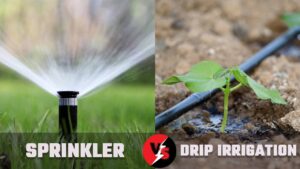
Here’s a step-by-step instruction to safely repotting your indoor plants. Your plants will benefit from a fresh container as they grow larger and stronger.
If you are new to the world of plants and gardening, the concept of transferring them may create concerns, especially if you do not want them to be harmed in the process. Although there are several nearly impossible-to-kill houseplants available, such as air plants, yucca plants, spider plants, or aloe, they may require a new pot or window box at some point. As a result, we’ve put together a straightforward step-by-step guide on how to transfer plants.
Some plants eventually exceed their containers. Repotting the plants should be done every 12 to 18 months. However, if the plant is sluggish growing, such as a cactus, repotting it every two to four years is sufficient. So read on for the finest tips and tactics for keeping your houseplants safe throughout and after the procedure, as well as some options for air purification and cat-friendly plants.
What do You Need to Transplant Your Plants
Repotting a plant will not take much time or money. So, if you notice that the roots have already grown out of the pot and require more space, you may be confident that your plant requires a larger container. This is what you should have before you begin.
- Your existing plant (or a new plant if you want to put it in a more decorative pot).
- A new or larger pot: If you’re going to use one you already have, make sure it’s clean before you start repotting.
- Fresh Potting Peat: Your plant needs fresh, nutrient-rich soil to grow.
- Lava Rocks: If your pot lacks drainage holes, purchase rocks for the bottom of the pot.
- Gloves: Not only should you wear gloves to keep your hands clean, but you should also wear them when handling irritants like Ficus elastica.
- A watering can: If you don’t want or are unable to use the sink faucet, purchase a watering can or bottle of water.
- A tarp will help you keep your space tidy. The newspaper is also adequate.
How to Identify When Your Plant Needs to be Transplantation

It is critical that you understand what type of plant you have and how to care for it. Knowing this will help you determine how frequently it should be repotted. Here are some general indicators that you should re-pot one of your plants.
- Nutrient buildup: If you observe any residue on the soil surface, there could be mineral and nutrient buildup. This keeps water from getting to the roots.
- Excessive root growth: Check to see whether the roots are coming out of the drainage holes in the pot. Also, check to see whether the plant’s roots are pushing it out of the pot.
- The plant is excessively large: This is one of the most obvious indications. If the foliage becomes so dense that it obscures the pot, it is time to repot. This is also true if the plant is going to topple over.
- Compacted soil: When soil particles are forced together, compaction develops. This keeps water from reaching the roots (and you’ll see that water gathers on the surface rather than being absorbed).
Step by Step to transplant your plants

- Take caution when removing the plant from its previous pot. Rock the plant sideways while holding it by its leaves or stems. Turn the pot over and push on the bottom of the container until the plant comes out. If it doesn’t come out on its own, gently pull on the stems.
- Loosen the plant’s roots: if any of the roots are too long, cut them, but make sure to leave the thickest ones at the base. Before cutting, check to see if the roots have grown in circles around the base of the plant, and carefully untie them for clipping.
- Get rid of old potting soil: Your newborn plant receives nutrients from the soil as it grows. Make a place for new soil by removing a third or more of the old potting soil.
- Fill the pot with new potting soil and pat it down to remove any air pockets. If the pot lacks drainage holes, place lava stones on the bottom to drain the water.
- Now is the moment to put the plant, whether fresh or old, in the container. Before you start adding more peat moss or potting soil, be sure the plant is centered.
Advice: Don’t overfill the new container with soil or press it down too tightly, as this can prevent the roots from breathing.






